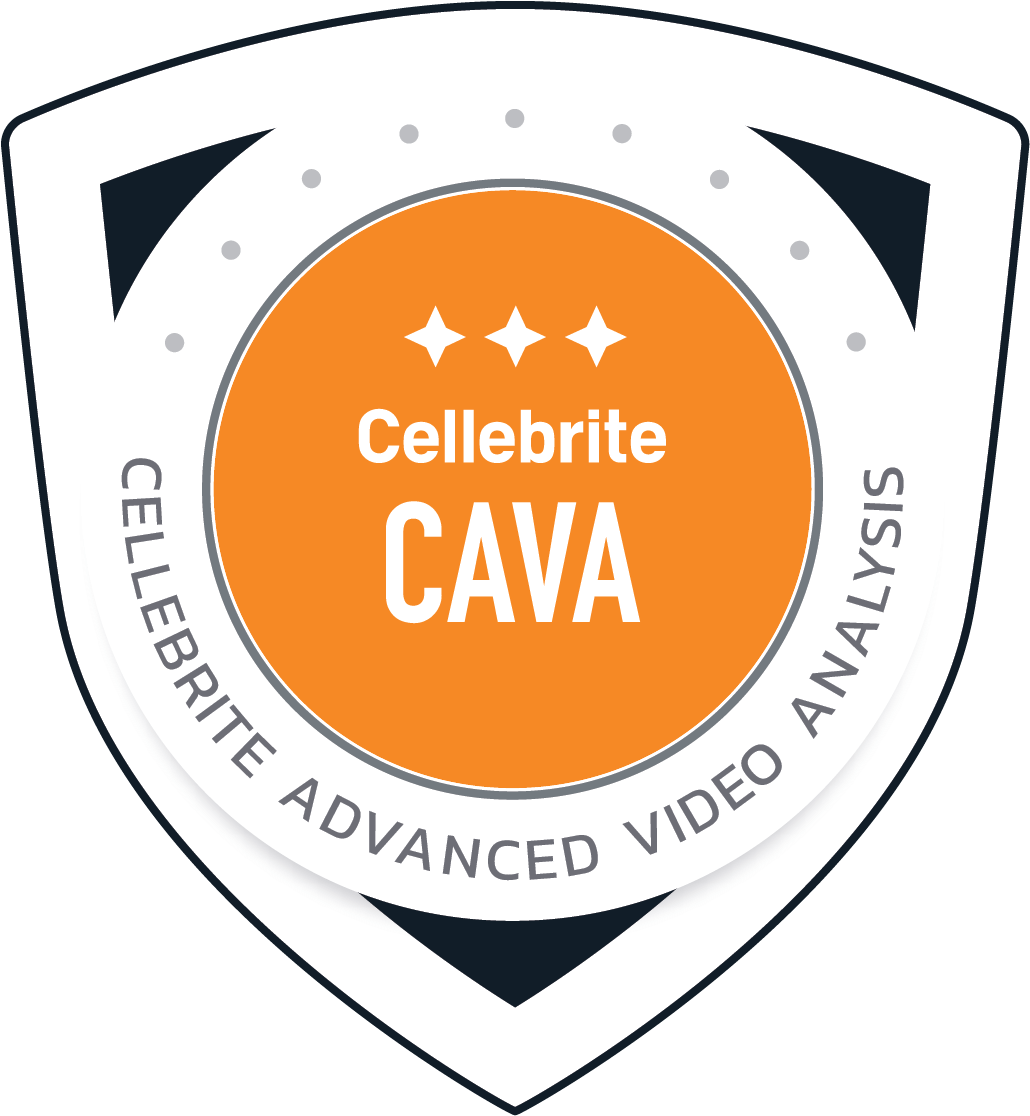Cellebrite Advanced Video Analysis (CAVA)

5 days
Advanced-level course
Course Description
Cellebrite Advanced Video Analysis (CAVA) is a five (5) day advanced course designed to serve as the next step for students who have successfully completed any of Cellebrite’s courses, a vendor-specific training offering in multimedia forensics, or students new to multimedia forensics who are seeking to dive right into processing a complex case.
The course covers evidence handling, complex work flows around codec management within virtual machines, comparative analysis files retrieved from multiple locations, troubleshooting problematic file types, as well as the creation of demonstrative exhibits and testimonial preparation for the eventual testimonial experience.
The curriculum is presented with strong emphasis on the workflow required to process this unique type of evidence within the justice context. Beginning with the end in mind, each example is presented, and students work from the standpoint of an eventual testimonial experience.
The course materials, sample working files, and helper software will be provided via shared drive in the classroom. Students are encouraged to bring their own samples / examples to see the demonstrated products and workflows in action on familiar content.
Course Content

Introduction to the Case
- Determine key evidentiary elements and considerations of the presented major crime inquiry
- Determine appropriate tools and techniques to process the recovered evidence for the presented major crime inquiry

Evidence Handling / Processing Considerations
- Summarize the foundational standards for Forensic Multimedia Analysis and explain their relevance to the presented major crime inquiry
- Organize and make use of a standards-compliant evidence collection and processing reports

Getting Started: Setting Up The Virtual Machine
- Create, configure, and validate a virtualized Windows environment utilizing Virtual Box

Codecs and Guided Software Installations
- Summarize the technical considerations for multimedia evidence and explain their relevance to the presented major crime inquiry.
- Summarize the quality management standards for Forensic Multimedia Analysis and explain their relevance to the presented major crime inquiry
- Plan, organize, and make use of FOSS tools and codecs within a virtualized Windows environment

Evidence Retrieved Directly From DVRS/NVRS
- Summarize the foundational standards for retrieval, handling, and documenting of digital multimedia evidence and explain their relevance to the presented major crime inquiry

Introduction To The Evidence Processing Window
- Summarize the foundational standards for the processing of digital multimedia evidence and explain their relevance to the presented major crime inquiry
- Plan, organize, and make use of FOSS image processing tools within a virtualized Windows environment

Human Factors in Multimedia Evidence
- Summarize the influence of human factors in the handling and processing of digital multimedia evidence and explain methods for their mitigation

Legal Considerations
- Summarize the global and local legal landscape, statutes, and precedents for the handling and processing of digital multimedia evidence in both the civil and criminal contexts

File Triage
- Examine and break file-level information into parts by identifying key structures and relationships
- Make inferences and find evidence to support generalizations about key file-level attributes

Content Triage
- Examine, identify, and quantify key contextual information within a given evidence file
- Make inferences and find evidence to support generalizations about key contextual attributes

Frame Analysis
- Examine, identify, and quantify key structural information within a given evidence file
- Make inferences and find evidence to support generalizations about key structural attributes

Multimedia Processing Techniques
- Design and execute complex workflows and analytical experimental procedures across a variety of digital multimedia evidence types
- Make inferences and find evidence to support generalizations about key structural attributes.
- Organize and make use of a standards-compliant evidence collection and processing reports

Comparative Analysis Considerations
- Compile, generate, or view information or files together in a different way by combining elements in a new pattern or by proposing alternative explanations to proposed sequences of events

Common Issues With Audio Tracks
- Summarize the foundational standards and techniques for the processing of digital audio evidence and explain their relevance to the presented major crime inquiry.
- Plan, organize, and make use of FOSS audio processing tools for the clarification of digital audio-based evidence files

Overcoming Common and Uncommon Obstacles
- Summarize the common and uncommon obstacles to the successful processing and analysis of digital multimedia evidence files and explain their relevance to the presented major crime inquiry

Presenting One's Work
- Summarize the foundational standards for formal reports in Forensic Multimedia Analysis and explain their relevance to the presented major crime inquiry
- Plan, organize, create, and present a formal report of their work in the analysis of digital multimedia evidence files
